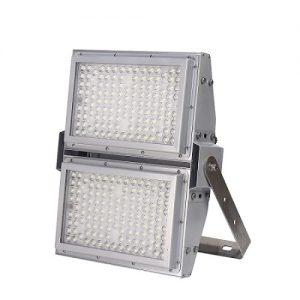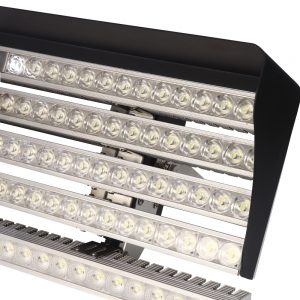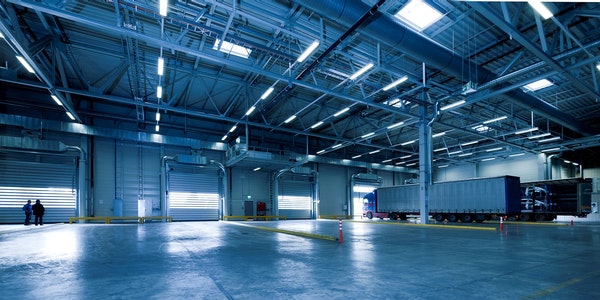LED Lighting Parameter Standard
The parameter standards of LED lighting fixtures should mainly refer to the road lighting, indoor lighting, semiconductor lighting and other standards or technical specifications promulgated by the International Electrical Association, the International Semiconductor Lighting Research and Development and Industry Federation. They mainly include: the parameters of the LED lighting lamps involved in the above-mentioned international standards or technical specifications mainly include optical parameters and electrical parameters.
Light parameters
Light parameters include the luminous flux of the light source/lamp, the light distribution characteristics of the lamp, and the luminous efficiency.
1) Luminous flux. Luminous flux refers to the total light energy emitted by the light source. The significance of testing this parameter is that the lamp emits light energy by consuming electric energy. The greater the luminous flux, the more light energy it emits. Therefore, it is an indicator of the luminous ability of the light source. When the power consumption of two lamps is the same, the greater the luminous flux, the better the lamp.
2) Light distribution characteristics of lamps. The light distribution characteristics of the lamp refer to the spatial light intensity distribution of the lamp in the two planes of C=0° and C=90° with the change of the γ angle. The significance of testing this parameter is: when lighting with a light source, it is hoped that the light emitted by the light source will evenly illuminate the illuminated object instead of focusing on one point. To achieve this goal, the light emitted by the light source must have a certain intensity in the space. distributed. Regarding the light distribution characteristics of lamps, there are no corresponding regulations in the world. The test of light distribution characteristics is only a reference for user enterprises.
3) Light effect. Luminous efficiency refers to the ratio of the luminous flux (lumens) emitted by the tested LED lamp to the electric power (watts) consumed by the lamp. The significance of testing this parameter is that although luminous flux is the main indicator to measure the luminous ability of a light source, it is a better light source that consumes less electricity and emits more light energy. Therefore, the light efficiency index is used to judge an LED`s pros and cons of the lights.
Electrical parameters
Electrical parameters include actual power consumption, power factor, voltage harmonic distortion, and current harmonic distortion.
1) Actual power consumption. The actual power consumption refers to the power consumed by the entire lamp, also known as active power. The significance of testing this parameter is: in the lamp, not only the light source consumes power, but the driving power supply also consumes power, and the actual power consumption includes the sum of the power consumption of the light source and the power supply. Since the nominal rated power of a light source generally only refers to the power consumption of the light source, there is a difference between the actual power consumption and the rated power of the lamp, and the closer this difference is, the lower the power consumption, the lower the overall energy consumption of the lamp.
2) Power factor. Power factor refers to the cosine of the phase difference (Φ) between voltage and current in an AC circuit. The significance of testing this parameter is: this indicator is the ratio of the active power of the lamp power supply to the apparent power, which describes the ratio of the lamp’s power to its total power. The closer the power factor is to the number 1, the better the lamp.
3) Harmonic distortion (THD). Harmonic distortion (THD) refers to the harmful interference of various multiples of the original frequency, including voltage harmonic distortion and current harmonic distortion. The significance of testing this parameter is that the driving power supply of the light source will cause various electromagnetic interferences to the outside world. When this influence reaches a certain degree or there are many such light sources to a certain degree, it may affect the normal operation of other electrical appliances. The harmonic distortion has a light index to judge, the smaller the index, the better.
When manufacturing LED lamps, manufacturers can choose raw materials, order chips, select power supplies, and assemble lamps at will, and simply combine LED lamp beads and lamp holders into the market. High-power and high-brightness light-emitting diodes (LEDs) are penetrating into some lighting applications with their excellent color saturation and long service life. However, preventing LED overheating is the most challenging task for thermal designers. Therefore, simulating LED components through computational fluid dynamics (CFD) becomes more and more important in the application design process.
What are the technical parameters of LED lamps and their protection grades IP62, IP65, IP66?
The technical parameters of LED lamps often see that the protection levels are IP62, IP65, IP66, but in most cases, many people don’t know what is IP65, what is IP66, and what is IP protection level. Let’s discuss it with you here, by the way. Understand what is IP protection level: IP (International Protection) protection level system is drafted by IEC (INTERNATIONAL ELECTROTECHNICAL COMMISSION). The lamps are classified according to their dustproof and waterproof characteristics. The foreign objects referred to here include tools, that is, human fingers, etc., should not touch the live parts of the lamp to avoid electric shock. The IP protection level is composed of two numbers. The first number indicates the degree of dustproof and foreign object intrusion of the lamp, and the second number indicates the degree of airtightness of the lamp against moisture and water intrusion. The larger the number, the higher the degree of protection.
The definition of the first marked digital protection level
0. No protection, No special protection to outside people or things
- Prevent the intrusion of solid objects larger than 50mm, prevent the human body (such as the palm) from accidentally contacting the internal parts of the lamp. Prevent foreign objects of larger size (diameter greater than 50mm) from intruding.
- Prevent the intrusion of solid objects larger than 12mm, Prevent people’s fingers from contacting the internal parts of the lamp to prevent the intrusion of foreign objects of medium size (larger diameter 12mm).
- Prevent larger solid objects from intruding, prevent tools, wires with larger diameter or thickness, or small foreign objects with similar details from intruding and contacting the internal parts of the lamp.
- Prevent larger solid objects from intruding, prevent tools, wires or similar details with larger diameter or thickness from intruding into the parts inside the lamp.
- Dustproof, Completely prevent the intrusion of foreign objects. Although it cannot completely prevent the entry of dust, the amount of intrusive dust will not affect the normal operation of the lamp.
- Dustproof, Completely prevent the intrusion of foreign objects, and can completely prevent the entry of dust.

The degree of protection referred to by the second marked special number (number), definition
0. No protection, No protection
- Prevent the intrusion of dripping water, Vertical dripping water droplets (such as condensed water) will not cause harmful effects on the lamp.
- Drip water can still be prevented from intruding when tilted 15 degrees, when the lamp is tilted from vertical to 15 degrees, dripping will not cause harmful effects on the lamp
- Prevent the intrusion of sprayed water, proof from rain, or prevent the water sprayed in the direction with an angle of less than 60 degrees from the vertical from entering lighting and causing damage.
- Prevent splashing water intrusion, Prevent splashing water from all directions from entering the lamp and causing damage. 5. Prevent the intrusion of sprayed water,
- prevent the water from the nozzle from all directions from entering the lamp and causing damage.
- Prevent the intrusion of large waves, The lamps installed on the deck can prevent damage caused by the invasion of large waves.
- Prevent water intrusion during immersion. The lamp can be immersed in water for a certain period of time or the water pressure is below a certain standard to ensure that no damage is caused by water ingress.
- Prevent water intrusion during sinking, The lamp will sink indefinitely under the specified water pressure to ensure that it will not be damaged by water.
Why Does the Cost of LED Lighting Decrease While the Luminous Efficiency Increases?
Why are other industries and overseas companies so actively involved in the field of LED lighting, and why is the market so active? This is because the luminous efficiency and price that have been recognized as the subject of LED lighting in the past have been improved, and LED lighting that exceeds fluorescent lamps in all aspects is about to come out.
The luminous efficiency of LED chips is increasing year by year. The development blueprint published by the Japan LED Lighting Promotion Association (JLEDS) in XX predicts that the luminous efficiency of white high-efficiency LEDs will reach 120lm/W by 2015 and will exceed 200lm/W by 2020. However, there were also manufacturers who stated that “150lm/W products can be put on the market in the next 2 to 3 years” (Philips Electronics Japan’s Vice President Yamada Norhide), “It has reached 120~130lm/W, and It has also achieved a mass product of 150lm/W” (Nichia Chemical Industry Representative Director and Vice President Tasaki Nobori). The efficiency improvement rate in the past one or two years has exceeded expectations. Generally speaking, LED lighting has the influence of power loss and temperature rise. Therefore, the luminous efficiency (comprehensive efficiency) of the entire lighting fixture is mostly 30 to 50% lower than that of the LED chip, which is only about 50 to 70 lm/W. However, products with a comprehensive efficiency of 80lm/W and above are not uncommon recently. It is expected that around 2030, it will exceed the efficiency of inverter-type fluorescent lamps (90lm/W~100lm/W early) and reach or exceed the level of fluorescent energy-saving lamps.


